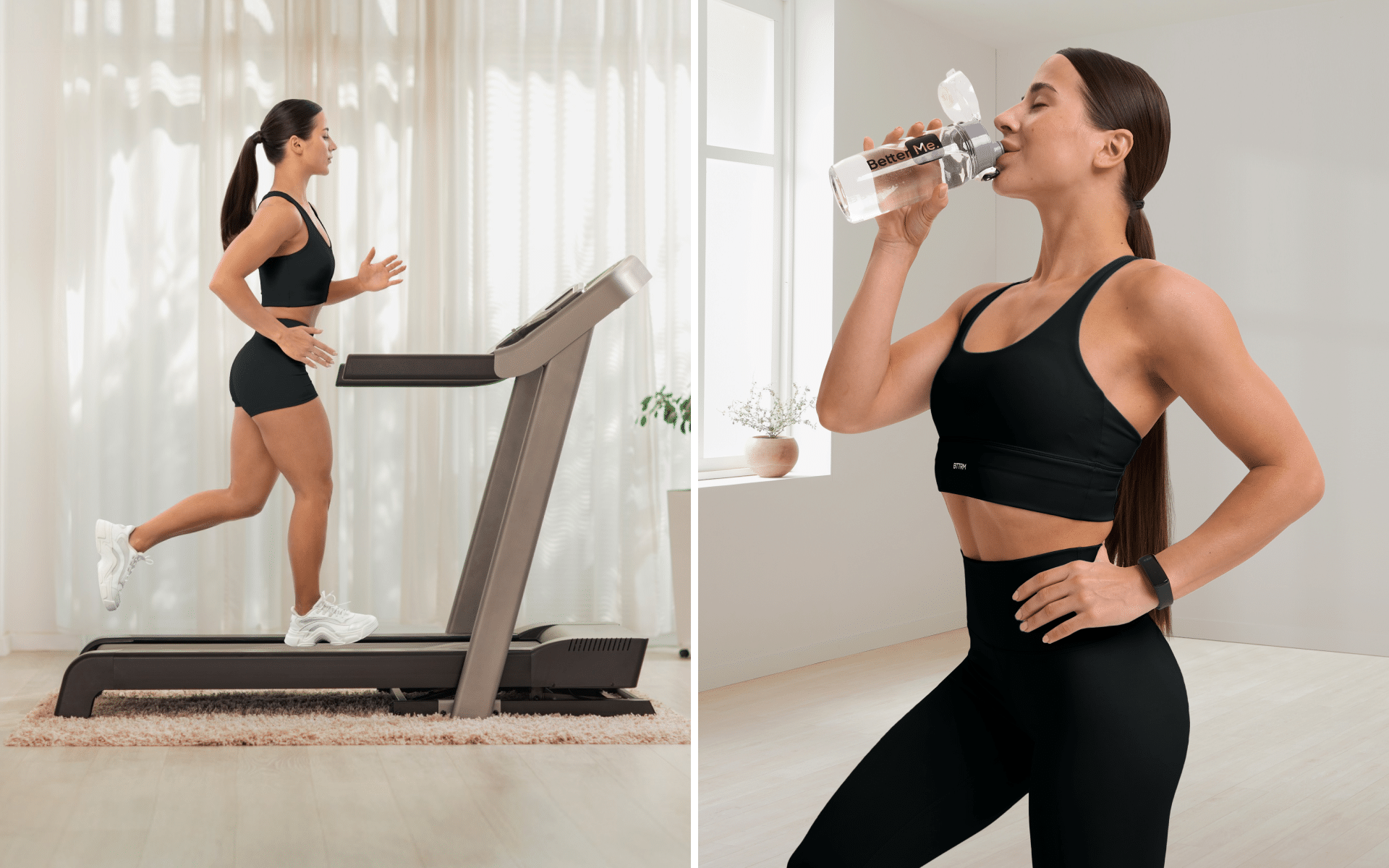We can all agree that weight loss is a complex concept. Contrary to what most people think, this concept involves more than the maintenance of a calorie deficit and implementation of an exercise program. There are other factors that you must consider, especially with your exercise regime. One of them is the cardio fat burning zone. Perhaps you have heard from various fitness gurus or your trainer about either the cardio fat burning zone or heart rate. But what is it?
If you are new to the fitness industry, you may be unfamiliar with the cardio fat burning zone concept. If it helps, know that even individuals who have been training for years may also not know this concept. Understanding the cardio fat burning heart rate is vital as it plays a crucial role in weight loss.
With this in mind, now we would like to discuss the concept of the fat-burning zone or heart rate. We plan to analyze what it is, its impact on weight loss, and how you can calculate this rate. Remember that understanding your heart rate during exercises will help you measure the intensity of your regime. As we all know, you burn more calories when you use a vigorous or more intense routine. That said, this insight is paramount. Check it out!
What Is The Cardio Fat Burning Zone?
The cardio fat-burning zone is a concept that looks at two primary zones that affect weight loss: the fat burning zone vs the cardio zone. For the longest time now, there have been debates about which of the two is better in weight loss.
The reality is that you cannot answer such a question without first understanding the underlying concepts of the two. With this in mind, let us thoroughly analyze the two to understand what they entail and their impact on weight loss.
The Fat Burning Zone
Some people call it the fat-burning zone, while others refer to it as the fat burning heart rate. It refers to the speed at which your heart should beat per minute for maximum fat burning results (4). It is an excellent indicator of the intensity of your physical activity or exercise regime.
Typically, an individual’s heart rate ranges between 60 and 100 beats per minute while lying down or sitting. This is known as the resting heart rate (4). When you now start exercising, your heart rate also tends to increase.
You will attain your highest heart rate when you are performing high-intensity workouts. Remember that high-intensity activities tend to take a toll on you, both physically and emotionally. Knowing this, it is no surprise that such exercises are only to be performed for short durations (4).
Your fat-burning heart rate is supposed to range between these two extremes when you are exercising. If you hit your fat burning zone due to increased intensity, your body tends to burn more stored fat than carbs and sugar (4). Consequently, most workout fanatics target high-intensity exercises to help them reach this zone and burn more fat.
Read More: How To Lose Weight In Your Feet: Busting The Spot Reduction Myth Everyone Has A Weak Spot
Measuring Your Fat Burning Heart Rate
You can choose to use an online calculator to know your heart rate if you hate doing the math. If not, why not go ahead and do the math yourself! Suppose you want your heart rate to range between the vigorous limit of 70% to 85% (3). You can calculate the expected heart rate by using the heart rate reserve (HRR) method. All you need is to follow these steps (3):
- Subtract your age from 220 to get your maximum heart rate. Suppose you are 45. It will mean subtracting 45 from 220 to get a maximum heart rate of 175.
- Calculate your resting heart rate. You will have to count the number of times your heart beats per minute at rest, preferably early in the morning. Remember that it should range between 60 and 100 beats per minute. Let’s say you found your heart beats per minute to be 80. Write this down somewhere.
- Calculate your HRR by subtracting your resting heart rate from your maximum heart rate. This means removing 80 from the answer in step 1, which is 175 (175-80). The answer is 95.
- Multiply the HRR (answer acquired in step 3) by 70% or 0.7. (0.7 x 95). The answer is 66.5.
- Add the answer to this solution to your resting heart rate. The answer for the resting heart rate is in step 2. So, you will add 66.5 to 80 to get 146.5.
- Next, multiply your HRR (answer acquired in step 3) by 85% or 0.85 (0.85 x 95). The answer is 80.75. Add the answer to your resting heart rate (solution for step 2) (80.75+80). The answer is 160.75.
- Write down the solutions acquired in steps 5 and 6. They signify the average target heart rate zone for an intense exercise regime. This means that you must try to push yourself until your heart rate zone lies between 146.5 and 160.75 beats per minute.
You can only tell if you reach such a zone using a tracker that regularly measures your heart rate (3). Consult the help of your trainer if you need help getting a reliable and accurate tracker.
Is It Effective?
Although most people rely on hitting this zone for weight loss, research shows that it has limited advantages (4). According to Medical News Today, the fat burning heart rate zone focuses on how your body burns fuel when working out (4). The more you exercise and attain a higher heart rate, the more body fat your body burns compared to carbs (4).
This sounds like a win, but the deeper you dig into this concept, the more you understand its limitations. One limitation is that these zones tend to have considerable overlap (4). Medical News Today research reveals that the optimal heart rate for burning fat ranges between 60.2% and 80% (4).
The study acknowledges that individuals can get such identical results from any heart rate so long as they are working out (4). The study findings denote that it is not wise to heavily rely on the fat burning heart rate zone for weight loss. It concludes that other factors than age determine individuals’ fitness levels and affect their heart rates (4).
Again, Medical News Today acknowledges that an individual will burn fat no matter if they hit the cardio or fat burning zone when exercising (4). This means that it makes little to no difference, when it comes to burning fat for weight loss (4).
These findings concur with another study that denotes that a person will always burn fat regardless of whether they hit the cardio or fat burning zone (7). Medical News Today also states that increasing the intensity of a workout is not challenging enough for some people, so they may not lose as much weight (4).
Want to build an attention-grabbing bubble butt, blast away fat that’s stored in all the wrong places, spring-clean your diet, turn back the clock on your skin, skyrocket your self-confidence and shatter your insecurities? Check out the BetterMe app and set this plan in motion!
The Cardio Zone
The cardio zone is also known as the aerobic zone. It refers to the zone in which your body uses its aerobic metabolic system to obtain energy from fat and glycogen (5). To reach this system, an individual must be performing aerobic activities. You can take up various aerobic exercises, such as swimming, running, jogging, or taking brisk walks.
Experts advise that you spend 150 minutes a week participating in a moderate-intense aerobic activity like brisk walking (1). However, if the aerobic exercise is vigorous, spend at least 75 minutes every week (1). Some people believe that cardiovascular or aerobic activities are not suitable for weight loss. However, they are.
According to Medical News Today, they help you torch calories that help you shed pounds. To give you an example of how these activities work, let us explore the calories a 154-pound individual can burn using various aerobic exercises. Take a look (1):
- Running at 5 meters per hour for 30 minutes- 295 calories
- Walking at a speed of 4.5 mph for 30 minutes- 230 calories
- Partaking in a vigorous basketball game for 30 minutes- 220 calories
- Cycling at over ten mph for half an hour- 295 calories
- Doing heavy yard work like chopping wood for 30 minutes- 220 calories
- Swimming for half an hour doing slow freestyle laps- 255 calories
- Doing aerobics for 30 minutes- 240 calories
These are merely estimates to show you that cardio or aerobic activities can help you burn calories and promote weight loss. They are not the standard limits of the number of calories you can torch if you weigh 154 pounds.
Remember that other factors also come into play, including your metabolism, body composition, and age. The more muscular you are, the more calories you get to burn even while resting (6). Similarly, if you have a higher metabolism, you will burn more calories than an individual with a sluggish metabolism (6).
The same concept applies to age. As you age, you will tend to lose muscle, and your metabolism may also slow down. Your body accounts for more fat than muscle when you get older (6). Remember that muscles help your torch more calories, which is why seniors burn fewer calories than youngsters (6).
Is The Cardio Zone Effective For Weight Loss?
To lose weight, you need to reduce the number of calories you consume or burn more calories than you are consuming (2). When you burn more calories than you are consuming, you eventually shed pounds (2). Reaching the cardio zone helps you burn calories, meaning it can promote weight loss if you also consume fewer calories than you have burnt.
You can burn more calories by increasing the duration of your workout or the intensity of your regime. For example, you can choose to extend your workout program to one hour instead of the usual 30 minutes.
At first, it will be challenging to keep pushing for this timeline. Take it easy and ease your way into it. If you cannot make it to one hour, try the 45 minutes mark. With time, you will increase your workout duration to one hour. However, remember to consult with a professional before making any changes to your workout plan.
Read More: Cardiovascular Endurance Exercises To Do At Home
Cardio Vs. Fat Burning Zone: Which Is Better For Weight Loss?
Everyone is looking for an easier way out when it comes to losing pounds. That said, of course there is a battle between the ideal zone to target, when working out between the cardio and fat burning zone. The thing is, every individual has a different weight loss journey.
Some people may be in different fitness levels or be using several medications that tamper perhaps with their heart rates. So, it is not safe to state the ideal zone for every individual who wants to lose pounds. The best approach is in consulting with a fitness coach and healthcare provider for more insight on safe weight loss.
The Bottom Line
You need to understand the cardio fat burning zone concept if you are exercising to lose weight. It focuses on the fat burning heart rate and cardio zones. Both promote weight loss, but in different ways. The fat burning heart rate zone allows your body to burn stored fat more than carbs. On the flip side, the cardio zone burns carbs and calories for weight loss. Talk to your trainer to determine the best zone to target for effective and safe weight loss.
Get your personalized
meal plan!

DISCLAIMER:
This article is intended for general informational purposes only and does not address individual circumstances. It is not a substitute for professional advice or help and should not be relied on for decision-making. Any action you take upon the information presented in this article is strictly at your own risk and responsibility!
SOURCES:
- Cardio for weight loss: What to know (2020, medicalnewstoday.com)
- Exercise for weight loss: Calories burned in 1 hour (2019, mayoclinic.org)
- Exercise intensity: How to measure it (2019, mayoclinic.org)
- Fat burning heart rate: Everything you need to know (2019, medicalnewstoday.com)
- Heart Rate Acquisition and Threshold-Based Training Increases Oxygen Uptake at Metabolic Threshold in Triathletes: A Pilot Study (2019, ncbi.nlm.nih.gov)
- Metabolism and weight loss: How you burn calories (2020, mayoclinic.org)
- Quantifying differences in the “fat burning” zone and the aerobic zone: implications for training (2009, pubmed.ncbi.nlm.nih.gov)







